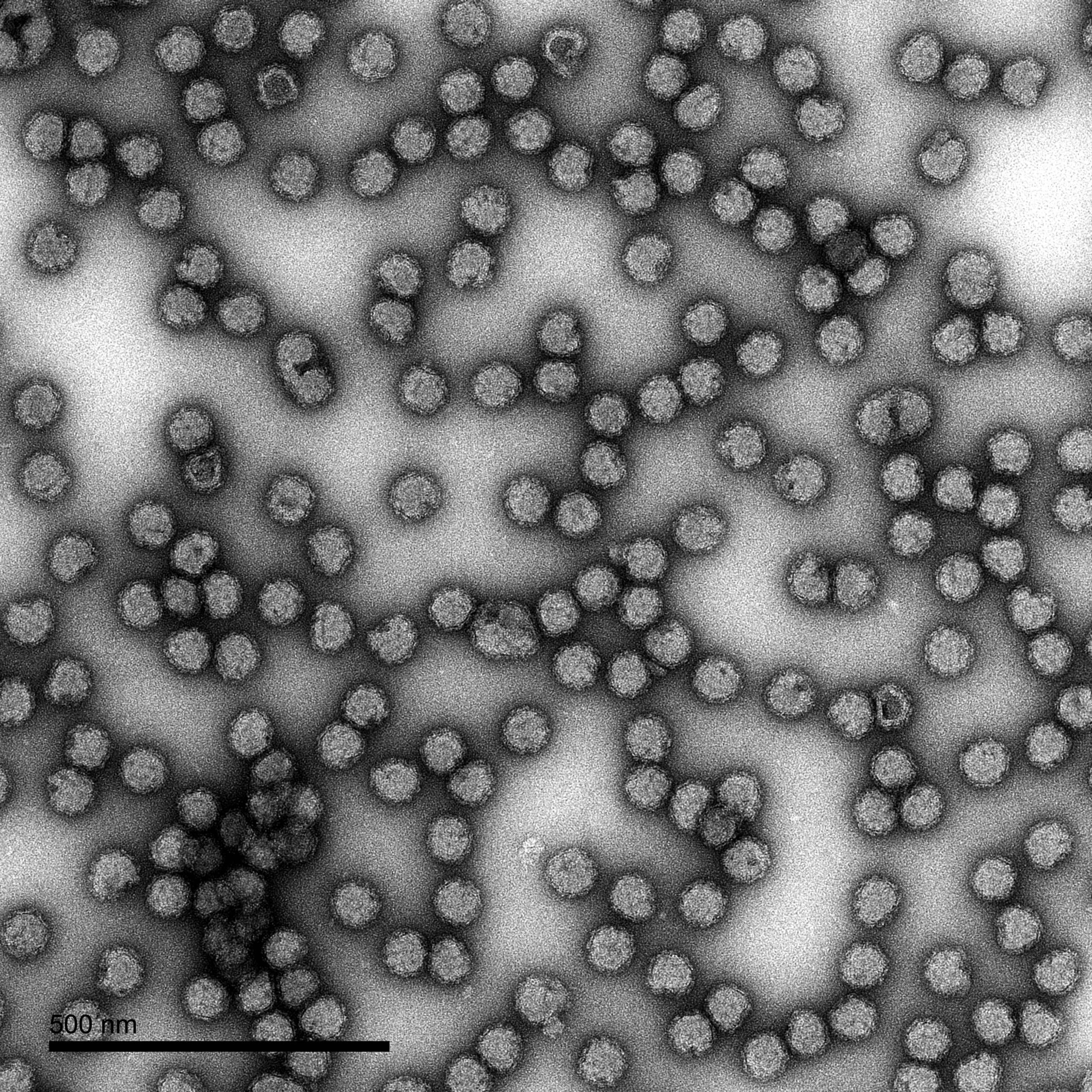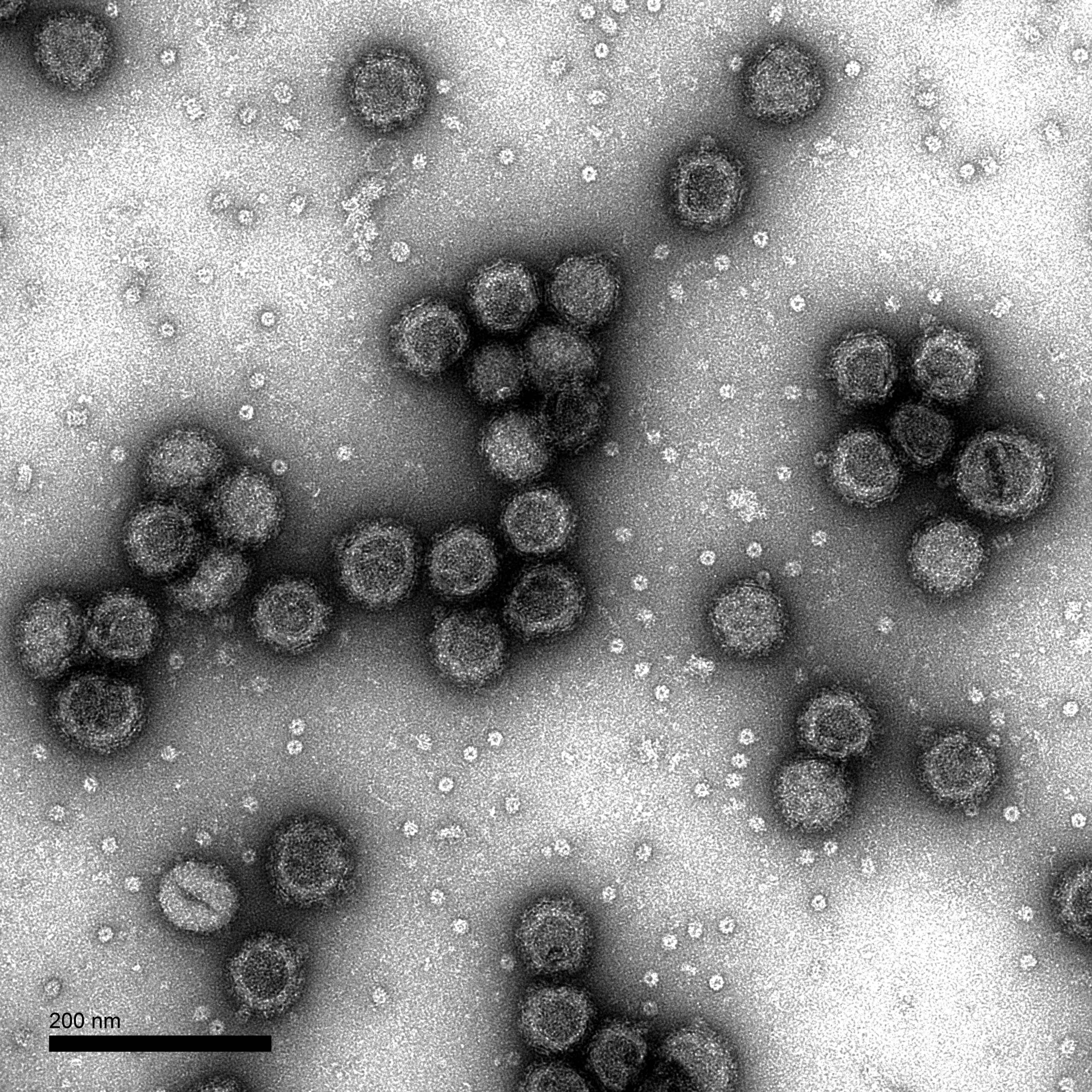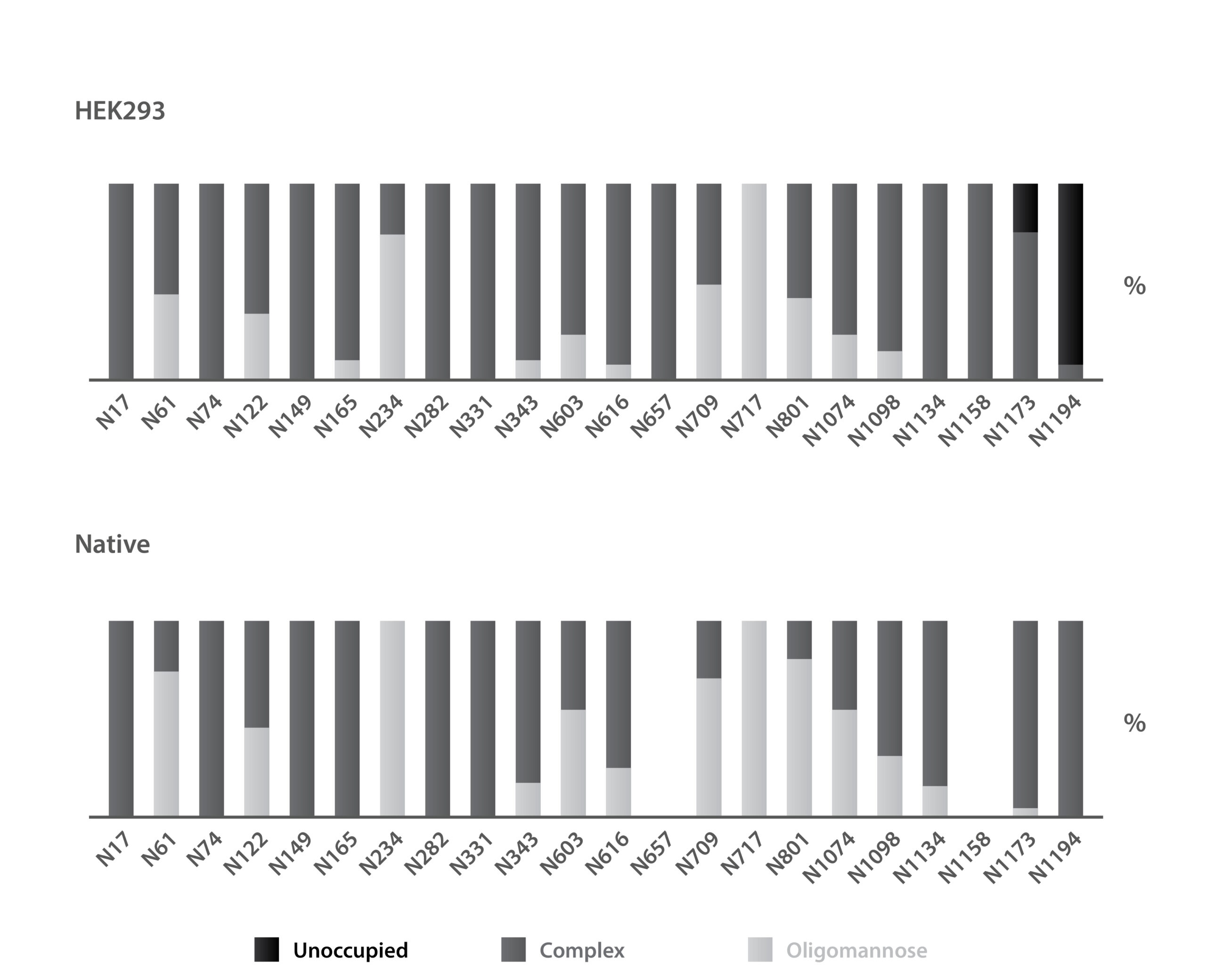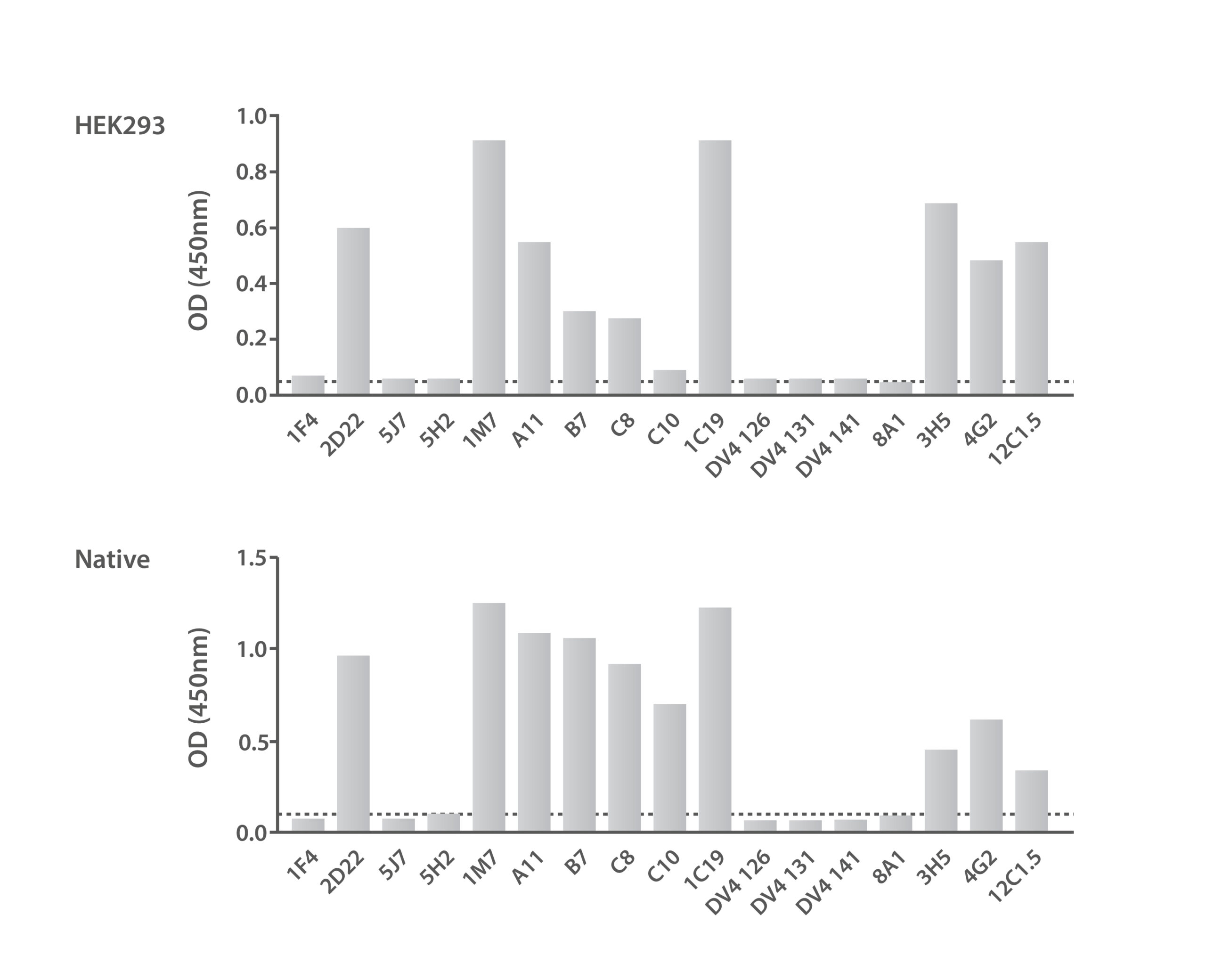VirtuE™ Expression System
Here, we explain the history of The Native Antigen Company’s HEK293 VirtuE™ expression system and its advantages in producing high-quality glycoproteins.
HEK293’s History
In 1973, Frank Graham was studying for his postdoctorate at the University of Leiden, Holland. At the time, little was known about the molecular mechanisms of cancer, much less their relationship to oncogenic viruses. Graham and others were therefore attempting to use oncogenic viruses to develop in vitro tumour models.
Graham’s research focused on type 5 adenoviruses, and the relationship between their GC content and propensity to cause cancer. One of his experiments involved taking cells from human embryonic kidneys (HEK) and transfecting them with fragments of sheared adenovirus DNA. After months of work and a total of 293 experiments, Graham yielded an immortalised cell line from which HEK293 gets its name [1]. This had been achieved by the incorporation of a 4.3kb adenoviral DNA fragment encoding the virus’s early region 1 (E1), which counteracted the cell’s natural apoptotic pathways [2].
From the 1980’s, HEK293 became an increasingly popular cell line, and multiple lineages were adapted for a range of applications including, selectively-inducible expression, antibiotic resistance, viral vector production, altered glycosylation and stable transfection [3]. Therefore, although all HEK293 cells in use today originate from the same parental lineage, there are significant genomic and transcriptomic differences between progenitor cell lines.
Incidentally, it was assumed that HEK293 was generated by transfection of fibroblastic, endothelial or epithelial cells, all of which are abundant in kidneys. However the fact that the cells originated from an embryonic kidney does not say much about their cellular origin, as many other cell types are often present. Furthermore, recent studies have shown that HEK293 cells share many properties of immature neurons, potentially derived from the embryonic adrenal gland [4]. Yet, as HEK293 cells demonstrate no tissue-specific gene expression signatures and have a pseudotriploid genome, its origins will likely continue to be shrouded in mystery [5].
VirtuE™
In 2010, The Native Antigen Company’s founding scientists were attempting to produce native AdV particles for use in oncolytic virotherapy research (the use of engineered viruses as therapies to kill cancers). A newly suspension-adapted HEK293 lineage was found to be particularly well-suited to this application, as the adenoviral E1 gene enabled the production of replication-deficient adenovirus particles [6].
The cell line continued to be adapted and optimised for a growing range of applications, becoming the Company’s proprietary VirtuE™ expression system. VirtuE™ has since been used to develop >50% of The Native Antigen Company’s products, including recombinant and native antigens, virus-like particles, human cell-surface receptors and bacterial toxins.

Transmission electron micrograph of VirtuE™-expressed O’Nyong’Nyong Virus-Like Particles.

Transmission electron micrograph of VirtuE™-expressed Mayaro Virus-Like Particles.
![8_Norovirus_0023 [EDIT] O'Nyong'Nyong Virus-Like Particles](https://thenativeantigencompany.com/wp-content/uploads/2021/05/8_Norovirus_0023-EDIT-scaled.jpg)
Transmission electron micrograph of VirtuE™-expressed Norovirus-Like Particles.
The Advantages of VirtuE™
Developing accurate assays requires the use of high quality antigens to capture or raise antibodies. Nearly all modern immunoassays are now developed and manufactured with recombinant proteins, which offer the advantage of low biosafety restrictions and allow improved batch-to-batch consistency [7]. However, its also well-established that different expression systems produce antigens that exhibit differences in folding and post-translational modifications.
One of the most common and relevant forms of modification is glycosylation, which impacts a range of protein attributes, including folding, stability, solubility and antigenicity. While there is no consensus on the ‘ideal’ glycosylation patterns for many antigens, insufficient or incorrect glycosylation has shown to cause differences in neutralisation efficacy, and lead to non-specific antibody binding and cross-reactivity in immunoassays.
As a HEK293-derived human cell line, our VirtuE™ expression system ensures native-like glycosylation and proper folding of our antigens to maximise their specificity and performance in assays. Multiple studies have compared our VirtuE™-expressed antigens to native and other mammalian expression systems, showing a high degree of fidelity to native antigens.

Comparison of N-linked glycan profiles between HEK293 recombinant and native-expressed SARS-CoV-2 Spike proteins. Data from Allen et al, 2021 [8].

Binding of mAbs is similar between native virus and our
VirtuE™-expressed dengue serotype 1 VLPs. Data provided by Stefan Metz and colleagues.
References
1) Graham FL, Smiley J, Russell WC, Nairn R. Characteristics of a human cell line transformed by DNA from human adenovirus type 5. J Gen Virol. 1977 Jul;36(1):59-74. doi: 10.1099/0022-1317-36-1-59. PMID: 886304.
2) Louis N, Evelegh C, Graham FL. Cloning and sequencing of the cellular-viral junctions from the human adenovirus type 5 transformed 293 cell line. Virology. 1997 Jul 7;233(2):423-9. doi: 10.1006/viro.1997.8597. PMID: 9217065.
3) Lin YC, Boone M, Meuris L, Lemmens I, Van Roy N, Soete A, Reumers J, Moisse M, Plaisance S, Drmanac R, Chen J, Speleman F, Lambrechts D, Van de Peer Y, Tavernier J, Callewaert N. Genome dynamics of the human embryonic kidney 293 lineage in response to cell biology manipulations. Nat Commun. 2014 Sep 3;5:4767. doi: 10.1038/ncomms5767. PMID: 25182477.
4) Lin YC, Boone M, Meuris L, Lemmens I, Van Roy N, Soete A, Reumers J, Moisse M, Plaisance S, Drmanac R, Chen J, Speleman F, Lambrechts D, Van de Peer Y, Tavernier J, Callewaert N. Genome dynamics of the human embryonic kidney 293 lineage in response to cell biology manipulations. Nat Commun. 2014 Sep 3;5:4767. doi: 10.1038/ncomms5767. PMID: 25182477.
5) Stepanenko AA, Dmitrenko VV. HEK293 in cell biology and cancer research: phenotype, karyotype, tumorigenicity, and stress-induced genome-phenotype evolution. Gene. 2015 Sep 15;569(2):182-90. doi: 10.1016/j.gene.2015.05.065. Epub 2015 May 27. PMID: 26026906.
6) Louis N, Evelegh C, Graham FL. Cloning and sequencing of the cellular-viral junctions from the human adenovirus type 5 transformed 293 cell line. Virology. 1997 Jul 7;233(2):423-9. doi: 10.1006/viro.1997.8597. PMID: 9217065.
7) Infantino M, Damiani A, Gobbi FL, Grossi V, Lari B, Macchia D, Casprini P, Veneziani F, Villalta D, Bizzaro N, Cappelletti P, Fabris M, Quartuccio L, Benucci M, Manfredi M. Serological Assays for SARS-CoV-2 Infectious Disease: Benefits, Limitations and Perspectives. Isr Med Assoc J. 2020 Apr;22(4):203-210. PMID: 32286019.
8) Allen JD, Chawla H, Samsudin F, Zuzic L, Shivgan AT, Watanabe Y, He WT, Callaghan S, Song G, Yong P, Brouwer PJM, Song Y, Cai Y, Duyvesteyn HME, Malinauskas T, Kint J, Pino P, Wurm MJ, Frank M, Chen B, Stuart DI, Sanders RW, Andrabi R, Burton DR, Li S, Bond PJ, Crispin M. Site-specific steric control of SARS-CoV-2 spike glycosylation. bioRxiv [Preprint]. 2021 Mar 9:2021.03.08.433764. doi: 10.1101/2021.03.08.433764. PMID: 33758835.
